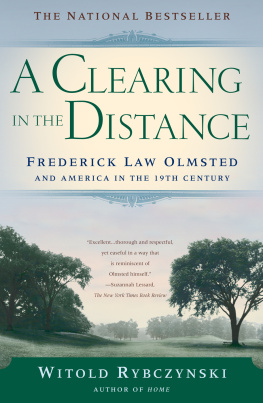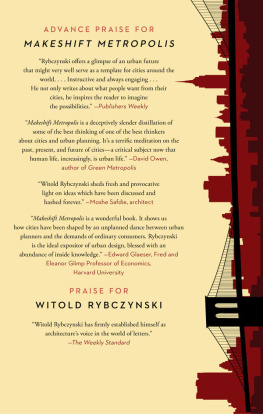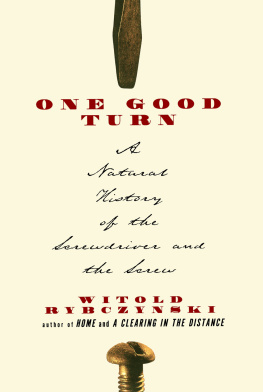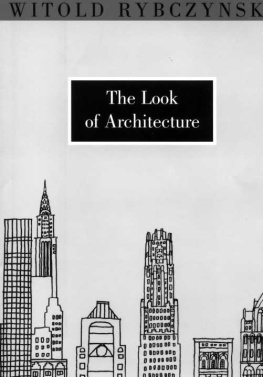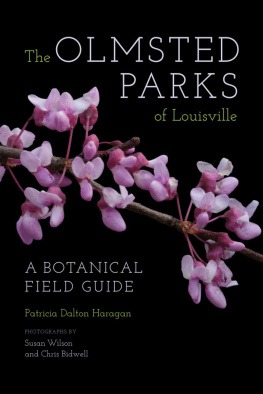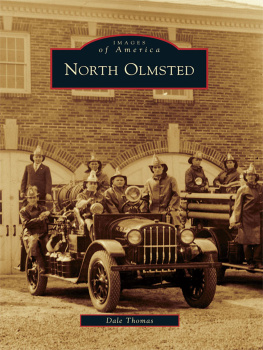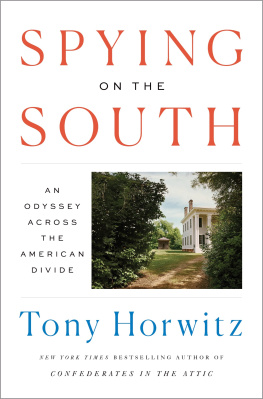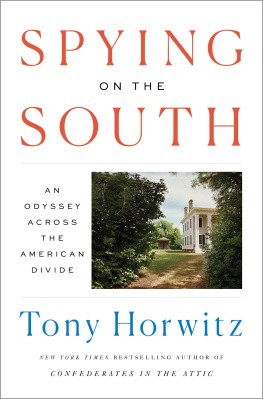
Frederick Law Olmsted, c.1885.
Thank you for downloading this Scribner eBook.
Join our mailing list and get updates on new releases, deals, bonus content and other great books from Scribner and Simon & Schuster.
C LICK H ERE T O S IGN U P
or visit us online to sign up at
eBookNews.SimonandSchuster.com
CONTENTS
In memoriam
W itold K azimierz R ybczynski
(19081996)
FOREWORD
T HE ISLAND OF M ONTREAL in the St. Lawrence River is more or less flat, except for a pronounced hill roughly in the center. The French explorers christened it Mont RalMount Royal. Its dark bulk is the city of Montreals most distinctive feature, visible from afar, and looming over the streets and buildings that surround its steep flanks. Actually, what is most distinctive about the mountain is that most of it is a public park. Not that anyone ever referred to it as a park, it was always just the Mountain.
I spent a year in a college dorm located high up one slope of Mount Royal; later, from the upper floor of my first apartment you could see the illuminated cross on top of the mountain. My last home in Montreal was a flat on a street called Esplanade, directly facing the east slope. All in all, Ive lived about twenty years in Montreal, always within walking distance of the Mountain. It was where we ran our dogs, went on picnics in the summer, tobogganed in the winter. A long, winding gravel road zigzagged up the forested slope until it reached a grassy bowl overlooking a small lake. Only one city street went through the park. It was not really a shortcut, but when I was not in a hurry, I often took this route; it was like taking a drive in the country. At one point the road went through a defile. At the far end, a breathtaking vista of the whole city stretched out to the river. On a clear day you could see all the way to the Green Mountains of Vermont.
Being on the Mountain was always a surprise. One minute you were walking on a busy city street, the next you were in a landscape of dense trees and rugged outcroppings. At first, the sound of traffic was audible, but soon it was replaced by the stillness of a primeval forest.
I remember as a college student being told that the Mountain was the work of someone called Frederick Law Olmsted, the same man who designed Central Park. I was impressed that he had come all the way from New York City, but what the work consisted of I couldnt imagine. Like most people, I took the landscape of the Mountain for granted; I thought that it was simply a nature preserve. Here was the most significant man-made object in Montrealarguably the citys most important cultural artifactand I thought of it as natural. How wrong I was.
Chestnut Hill, Philadelphia
November 1995November 1998
I have all my life been considering distant effects and always sacrificing immediate success and applause to that of the future.
F REDERICK L AW O LMSTED
Le gnie nest quune plus grande aptitude la patience. (Genius is no more than a greater aptitude for patience.)
G EORGE L OUIS L ECLERC , Comte de Buffon
S CHEMES


New Haven, 1846. ( from left to right ) Charles Trask, Charles Loring Brace, Frederick J. Kingsbury, Frederick Law Olmsted, and John Hull Olmsted.
They never get disheartened. I think Fred will be one of that sort. Many of his favorite schemes will go to naughtbut hell throw it aside and try another and spoil that and forget them both while you or I might have been blubbering over the ruins of the first.
F REDERICK J. K INGSBURY TO J OHN H ULL O LMSTED (1847)
CHAPTER ONE
T ough as N ails
W ITH HIS HIGH FOREHEAD , wide-set blue eyes, and unruly hair, the young Frederick Olmsted made a strong impression. A boyhood friend described him as a vigorous, manly fellow, of medium height, solidly built with rather broad shoulders and a large well formed head. If athletics had been in fashion he would have been high up in foot-ball and base-ball. In midlife he suffered a carriage accident that left him with a pronounced limp, but he remained a skilled small-boat sailor and an experienced horseman. He was a seasoned outdoorsman who hunted and fished, though not for sport. Later photographs usually show him pensive. He rarely looks directly at the camera, which gives him an air of self-containment, almost detachment. His face is generally very placid, wrote his colleague Katharine Wormeley, with all the expressive delicacy of a womans, and would be beautiful were it not for an expression which I cannot fathom,something which is, perhaps, a little too severe about it. But she added, I think his mouth and smile and the expression of his eyes at times very beautiful... there is a deep, calm thoughtfulness about him which is always attractive and sometimesprovoking.
An odd choice of wordprovoking. Olmsteds close friend Charles Eliot Norton likewise discerned this quality. All the lines of his face imply refinement and sensibility to such a degree that it is not till one has looked through them to what is underneath, that the force of his will and the reserved power of his character become evident. When I asked the landscape architect Laurie Olin how he would characterize Olmsted, his immediate answer was Tough as nails. Olin is right, of course. Although the modern image of Frederick Law Olmsted is of a benevolent environmentalist, a sort of Johnny Appleseed scattering beautiful city parks across the nation, he had indomitable energy and iron determination. As a mine manager in California, he once faced down a crowd of striking miners. (They were understandably upset because he had reduced their wages.) They tried a mob but made nothing of it, he laconically wrote to his father, and I have lost no property only time. I shall hold out till they come to my terms and dismiss all who have been prominent in the strike. He did just that. His obstinacy often got him in trouble. Many times he chose to resign positions rather than continue on a course of action he disapproved. His most famous resignationsthere were severaloccurred during the long and often frustrating construction of Central Park. But there were others. Leland Stanford, the railroad magnate, engaged him to lay out the grounds of what would become Stanford University. Olmsted prepared the plans on the understanding that, as was his practice, he would also hire his own staff to supervise the work. When Stanford, who had been governor of California and was used to getting his own way, reneged on the agreement, Olmsted walked away from the job. The university was completed without him.
Another battle of wills occurred during his tenure with the United States Sanitary Commission. The Commission, a precursor to the Red Cross, was a private organization established after the outbreak of the Civil War to administer volunteer relief efforts to the Union troops. Olmsted spent two years as its first general secretary, in charge of day-to-day operations. As fund-raising efforts intensified, hundreds of thousands of dollars flowed to the Commission, whose board felt the need to exert more direct supervision over the activities of its chief executive officer. He characteristically bridled at any attempt to curtail his freedom, and a sometimes bitter struggle ensued. One of those with whom he had run-ins was the treasurer of the Commission, George Templeton Strong. Strong, best known as the author of an exceptional set of diaries, was a prominent Wall Street lawyer and civic leader. He knew Olmsted well: both men were involved in the Union League Club and in the establishment of The Nation magazine. Some six months before Olmsteds resignation, Strong noted in his journal: He is an extraordinary fellow, decidedly the most remarkable specimen of human nature with whom I have been brought into close relations. Then, in obvious exasperation, he added: Prominent defects, a monomania for system and organization on paper (elaborate, laboriously thought out, and generally impracticable), and appetite for power. He is a lay-Hildebrand.

